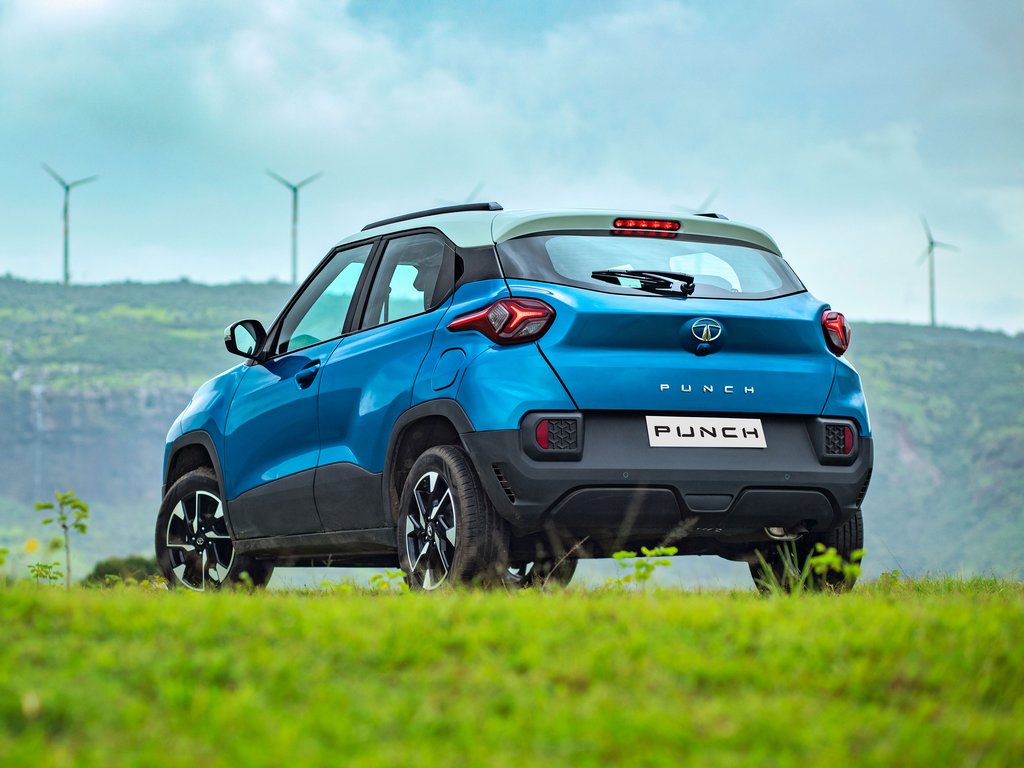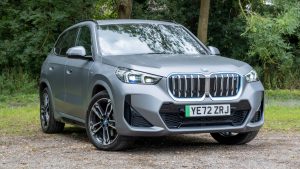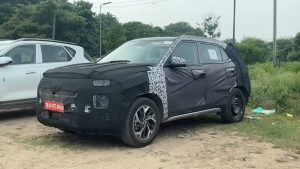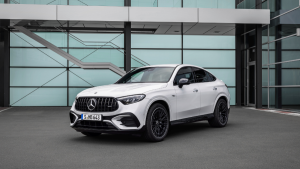The Tata Punch EV is the fourth electric car that the Indian company has made. Don’t get the wrong idea—this isn’t a normal ICE to EV conversion. This version of the Punch is built on a new, 100% EV platform that will also be used for future EVs. The Punch EV has a front end that looks like the Harrier and the Nexon, which are both SUVs based on the new Acti.EV design.
There are also some new parts on the car, like new alloy wheels, “.EV” logos all over, and even a charging port in the front. Although, we would have liked a few more unique features on the back, like a slightly different bumper or a brand-new set of headlights. Now, how does it work in the real world? Let us find out.
Is the Punch EV’s cabin nice?
The structure of the dashboard hasn’t changed from the ICE-powered Punch, but there are a lot of new screens all over, which were inspired by the Nexon EV. The new setup usually gets your attention when you feel the updated seat chairs, which have more support on the sides than the gasoline-powered Punch and make for a better fit. The 10.25-inch infotainment screen, on the other hand, has a number of voice helpers and the main Arcade.ev app suite. The second one can also be used as a distraction while you wait for your EV to charge.
The bottom half of the centre console is finished in Piano Black, and it also has a new haptic panel that handles the AC and other functions. The only chrome part in the car is possibly the jewelled gear dial, and I have to say, I like how things are set up. The front seats have air flow, and the fans don’t make a lot of noise, even though they weren’t used very much because Bengaluru is so nice right now. The new two-spoke multipurpose steering wheel with a leatherette finish feels like it’s from a higher level. The two-tone design and blue stitching that goes with some EV-specific parts also make it feel like it’s from a higher level.
When it comes to storage, the key fob fits snugly in a small nook on the centre panel, and the two cup holders to its left can hold small water bottles. There are many ways to charge your phone, such as a portable charger, a Type-C port, and a USB port, the last of which is a fast charger.
There isn’t a lot of legroom in the second row, but there is plenty of shoulder room for two healthy people. While there aren’t any charging ports for phones here, there is a secret hole where you can put your phone or other small items. After that, the Punch EV gets cooling and lighting for the front glove box. There are headrests that can be adjusted in the front and back.
Audiophiles will be pleased to know that, as usual for Tata, there is a four-speaker and two tweeter setup sourced from Harman, though the bass could use some work. The electric sunroof is a first for the area, and seeing the kids laugh as they use Hinglish to open it will make their day.
Is it fun to drive the Punch EV?
You can get the Punch EV with either a 25kWh or 35kWh battery pack and a single electric motor. The smaller capacity unit has an 80bhp engine with 114Nm of torque and a range of 315km. The Long Range version has 120bhp and 190Nm of torque and a range of 421km. With the 3.3kW AC wall box charger or 15A plug point, the EV can be charged from 0 to 100% in 9.4 hours. The 7.2kW unit, which is only offered on the Long Range models, cuts that time to five hours. With a 50kW DC fast charger, these times will drop to just 56 minutes (10–80%).
The Punch EV has a lot of torque right away, and you can tell this even when you take your foot off the brakes and the car picks up a little extra speed. You can choose between three drive modes. We started the day in Eco mode, which was more than enough to get us slowly through the streets of Bengaluru. If you need a little more power than most people, you can switch to the City mode, which is more lively than the Eco mode. Instead, though, it gives back a slightly smaller range. During the Sport mode, the Punch EV really speeds up. The power and small size of the vehicle help this, and before you know it, you’re going over 100 miles per hour.
Plus, there are three levels of regen to choose from and a mode with no regen that lets the car drive like any other car on the road. It takes a while to get used to the third level of regen, but once you do, it will finally change the settings to look like a single pedal. We used the regen function a lot, and by the end of the day, we were able to switch between the levels without thinking about it. Also, the display’s accuracy meant that there was almost no range concern, if any at all.
When the Punch EV goes over bumps, undulations, and holes, the suspension absorbs most of the shock without making the people inside feel too much. The body roll is also well controlled. This is likely because the batteries help the car keep its centre of gravity lower than a regular ICE car. The weight of the steering is just right—it’s not too heavy or too light. It moves in a smooth, straight way, going from locked to unlocked in two and a half turns.
Pick up the Punch EV.
You can choose from a lot of different colours, models, battery packs, and other things for the Punch EV. It has a lot of features and tech. It’s also easy to drive every day. There are some problems, though, like a panel gap, a mistake in the charging flap, bugs in the entertainment system and driver’s display, and second-row seats that are too close together. It also costs a lot more than other cars. The base price is Rs. 11 lakh, and the most expensive one is Rs. 14.49 lakh (ex-showroom). And that’s before you add the added sunroof or fast charger, which cost an extra Rs. 50,000 each.
Tata isn’t worried about its sales numbers overlapping with those of its siblings on either end of the range, though. Instead, it thinks that it will bring in a new group of first-time buyers. The Punch EV is basically the same as any other Vidhu Vinod Chopra movie: it’s great in its own way, but it doesn’t do anything special.






